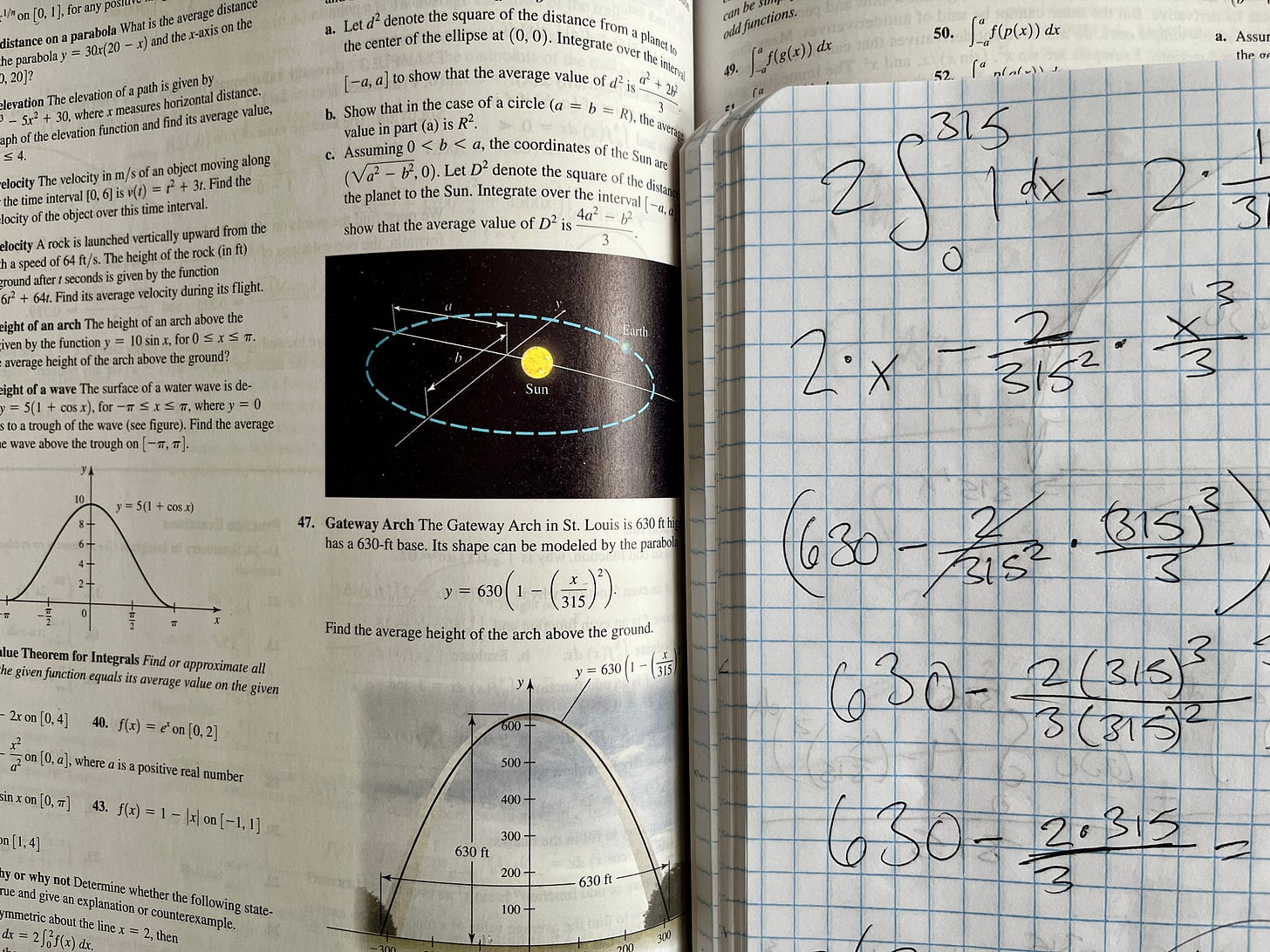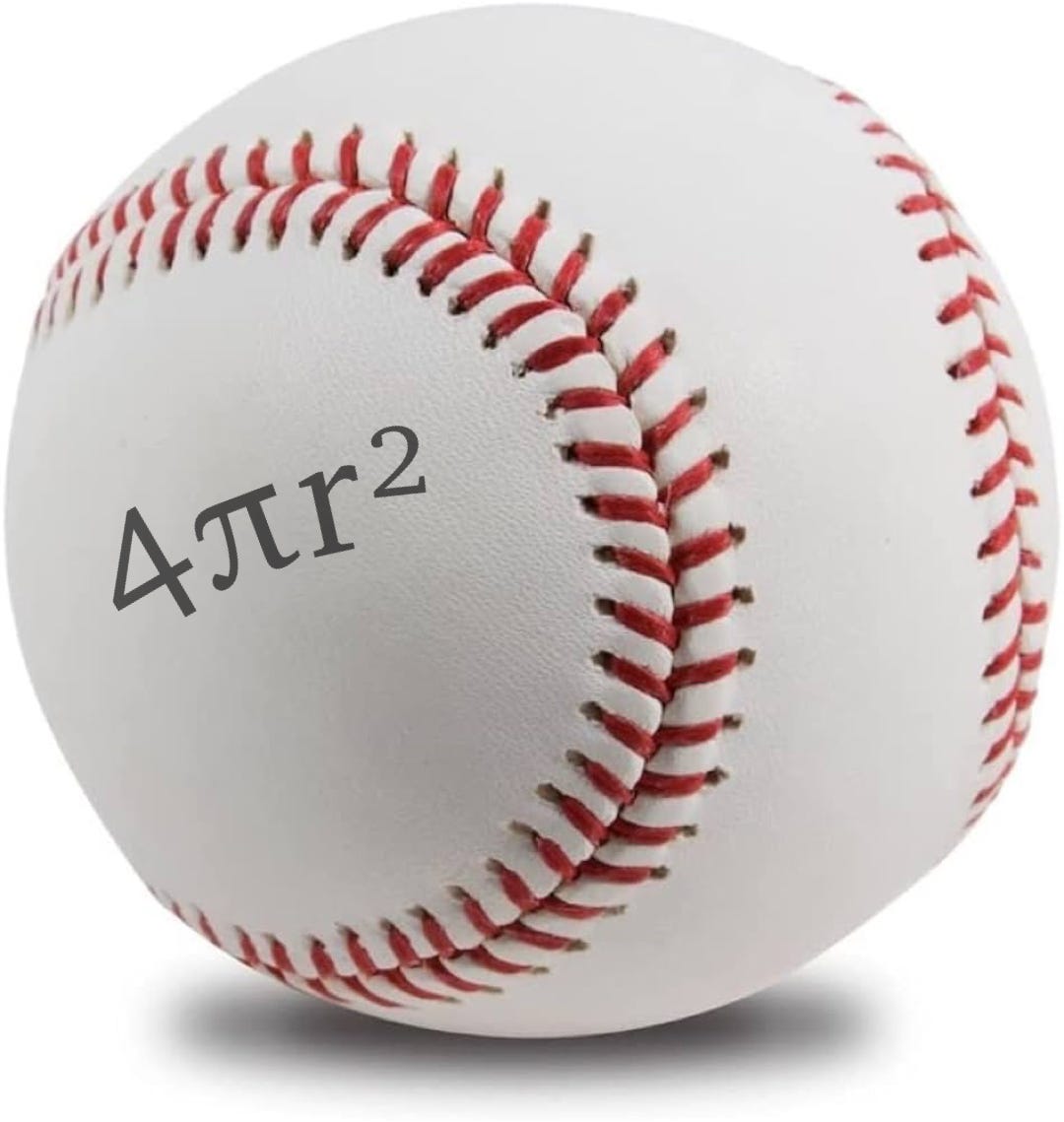I told a new friend I was working on a physics degree, and she got a little glassy-eyed. It surprised me that it was the same reaction I get when I tell someone I’m a professional musician.
They are both things we might have dreamed of when we were children. We imagined ourselves being world-famous and influential, but most of us who made those dreams come true played a lot of weddings or wrote grant applications every quarter. Having had a rewarding career as a not-so-famous musician, I think I’ll also enjoy teaching and working on a paper for an arcane academic journal in a dusty campus office.
We can get enamored with the idea of doing something without caring what it takes to do it. I mean, I can. I hope you can, too. That’s the beauty of dreams, and dreaming is the first creative process. But I’ve never liked the phrase, “Dreams come true.” First, you gotta pick a good dream. Then, you have to work your ass off, have a lot of money, or both.
It took me ten years to face up to the reality of what it would take to be a professional musician before I got to work on it, and now I wouldn’t wish a music career on anyone. It is often frustrating and heartbreaking. Every day, I do the math to see if it’s worth it to do the gig, to find out what it takes to make the next record, or to pay my friends what they are worth in an industry that usually doesn’t.
People also say, “I love physics, but I hate math.” I’m in my second year and have yet to take a physics course. You know what I’m doing?
Math.
Honestly, it’s not disappointing or grueling. I’m not biding my time until I can finally do real physics. The math is the physics; the only difference is in the name of the course.
As nice as it is to know that a pendulum swings at a constant rate, it’s breathtaking when I see that fact pop out of an equation. The secret papyrus of the universe unfolds, and everything is doing math all the time. Chandeliers are doing math. Stars are doing math. Electrons are doing math.
A few days ago, I learned something that illustrates what I mean. It’s mathematical but straightforward enough that I think anyone who graduated high school can understand it. If I’m wrong, let me know in the comments.
So.
If you’ve read Popular Science, followed SciShow on YouTube, or even read this far in this essay, you may have a basic idea of how gravity works. In particular, there’s something called the inverse square law, which means as you back away from a massive object, gravity falls off by the inverse square of the distance.
Astronomers use a unit called an ‘astronomical unit.’ We are simple people. 1 AU is the average distance from the earth’s center to the sun’s center. An AU is used like any unit, like a foot or a kilometer, but you’d need a very large ruler to measure an AU. Earth is 1 AU from the sun. Jupiter is about 5 AU from the sun, or five times as far from the sun as Earth.
So, the difference between the strength of the sun’s gravity at Jupiter’s orbit vs. Earth’s orbit is the inverse square of that increase in distance. The inverse of 5 is 1/5, and the inverse square is 1/5². Multiply 5 times itself, and you find that the sun’s gravity at Jupiter’s orbit is 1/25 as strong as it is at Earth’s.
This isn’t the thing I just learned. It’s a little mathematical fact that I’ve known for a long time. I have always wondered why it works that way. Why would the universe obey such a strangely simple rule? Shouldn’t there be some infinitely repeating decimal like pi or a crazy equation with Greek letters?
A few days ago, I was listening to Sean Carroll give a talk about his new book. Sean is a great science communicator, but he was mostly trying to sell books and doing a great job of it. However, he said something almost as an aside that gave the inverse square law such a simple, intuitive foundation that I’m not sure why I didn’t already know it.
Imagine gravity traveling out from the sun, like a bubble inflating into the solar system. Where the bubble’s surface meets with objects, they encounter the force of the sun’s gravity.
When a bubble grows, its walls get thinner and thinner. The force of gravity will not pop, but it does spread out more and more as it radiates outward from the sun.
People knew how to calculate the surface area of a sphere over two thousand years ago. It’s 4πr². “r” is the radius, which is the basis for that astronomical unit. The radius of Earth’s orbit is 1 AU. So, the surface area of our gravity bubble when it touches the earth is 4πAU² (or about 12.566AU²).
I want you to notice that there’s only one variable in that surface area equation. 4 is just a number. π (pi) is just a number. But r keeps growing as the bubble grows. At Earth, r is 1. At Jupiter, r is about 5. And in our formula for surface area, r is squared.
When your real estate agent tells you the size of the kitchen, she doesn’t just say how long it is. The length of a room is multiplied by the width. Square feet, or “ft²,” tell you something about the kitchen’s surface area. Likewise, r² gives us the surface area of that bubble of gravitational force.
As the bubble grows, the force of gravity thins out along that surface area. It’s an inverse relationship.
The surface area changes as the square of the radius.
The strength of gravity changes by the inverse square of the radius.
It’s not strange at all. It makes perfect sense.
I love this feeling, wondering for years and then finding the equation sitting cross-legged at the top of the mountain, saying, how could it be otherwise? Moments like this will always drive me.
Maybe I’m a little glassy-eyed about studying physics, too. It was a good dream. Now, it’s hard work. That doesn’t dull the dream, not even a little bit. I’m watching undergrads I’ve met in math classes get paid for summer research jobs. I’m attending a donor appreciation dinner to meet the people who gave me a scholarship last semester. Those things weren’t even in the dream! It’s as if, when we put in the work, we get paid by the surprising richness of reality (perhaps to compensate for the crushing dullness of committee meetings).
There’s one more thing I want to say about this, which could be an entire essay of its own. Maybe someday it will be. I am aware of general relativity. Newtonian mechanics are such a close approximation that a moon mission using general relativity instead will make a landing more accurate by about a centimeter. If an astronaut ate an extra piece of cake before takeoff, it would make far more difference.
General relativity didn’t disprove Newtonian mechanics. Newton was right, and he’ll always be right to an astonishingly close approximation. General relativity also seems to be a very close approximation. Heck, quantum mechanics makes it clear that any classical theory has its limits (pun intended).
So when you read something that says, “Big Bang Disproven!” just take it with about 64 milligrams of salt. We will always be surprised by the universe. We can also be surprised by how predictable it is.
Today, I’m going to integrate an elliptical orbit to find the average length of the square of the radius. Then I’m going to write a paper about steel. Keep dreaming, kids. Keep dreaming.
Your fan,
Jonathan Byrd














Share this post